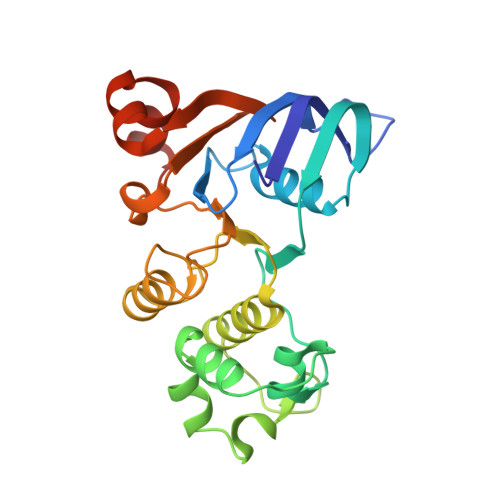Structure of the Human Multidrug Resistance Protein 1 Nucleotide Binding Domain 1 Bound to Mg(2+)/ATP Reveals a Non-Productive Catalytic Site.
Ramaen, O., Leulliot, N., Sizun, C., Ulryck, N., Pamlard, O., Lallemand, J.-Y., Van Tilbeurgh, H., Jacquet, E.(2006) J Mol Biol 359: 940
- PubMed: 16697012
- DOI: https://doi.org/10.1016/j.jmb.2006.04.005
- Primary Citation of Related Structures:
2CBZ - PubMed Abstract:
Human multidrug resistance protein 1 (MRP1) is a membrane protein that belongs to the ATP-binding cassette (ABC) superfamily of transport proteins. MRP1 contributes to chemotherapy failure by exporting a wide range of anti-cancer drugs when over expressed in the plasma membrane of cells. Here, we report the first high-resolution crystal structure of human MRP1-NBD1. Drug efflux requires energy resulting from hydrolysis of ATP by nucleotide binding domains (NBDs). Contrary to the prokaryotic NBDs, the extremely low intrinsic ATPase activity of isolated MRP1-NBDs allowed us to obtain the structure of wild-type NBD1 in complex with Mg2+/ATP. The structure shows that MRP1-NBD1 adopts a canonical fold, but reveals an unexpected non-productive conformation of the catalytic site, providing an explanation for the low intrinsic ATPase activity of NBD1 and new hypotheses on the cooperativity of ATPase activity between NBD1 and NBD2 upon heterodimer formation.
Organizational Affiliation:
Institut de Chimie des Substances Naturelles, UPR 2301, Centre National de la Recherche Scientifique, Avenue de la Terrasse, 91190 Gif-sur-Yvette, France.
















